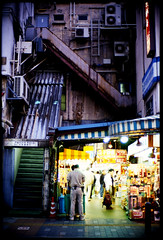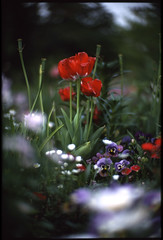


By Tommy Oshima
I held my first rangefinder last night. It belonged to a lady called .Nida, who told me she had bought it for $25 from the Ukraine. The viewfinder was a little cramped and I wasn't really sure what I was doing, but was excited nonetheless. More learning! From the very beginning.
What is an f-stop?
The literal interpretation of the f/N notation for f-number N is as an arithmetic expression for the effective aperture diameter (input pupil diameter), the focal length divided by the f-number: D = f / N.
Noooo!!! Maths?
No, come on, really... What's an f-stop?
The aperture stop is the aperture that limits the brightness of the image by restricting the input pupil size, while a field stop is a stop intended to cut out light that would be outside the desired field of view and might cause flare or other problems if not stopped.
In photography, stops are also a unit used to quantify ratios of light or exposure, with one stop meaning a factor of two, or one-half. The one-stop unit is also known as the EV (exposure value) unit. On a camera, the f-number is usually adjusted in discrete steps, known as f-stops. Each "stop" is marked with its corresponding f-number, and represents a halving of the light intensity from the previous stop.
As an example of the use of f-numbers in photography, an approximately correct exposure will be obtained on a sunny day by using an aperture of f/16 and a shutter speed close to the reciprocal of the ISO speed of the film; thus, using ISO 100 film, an aperture of f/16 and a shutter speed of 1/100 second. This is called the sunny 16 rule.
Phew. That I can understand. Plus an example? And a Rule? Thanks Wikipedia.